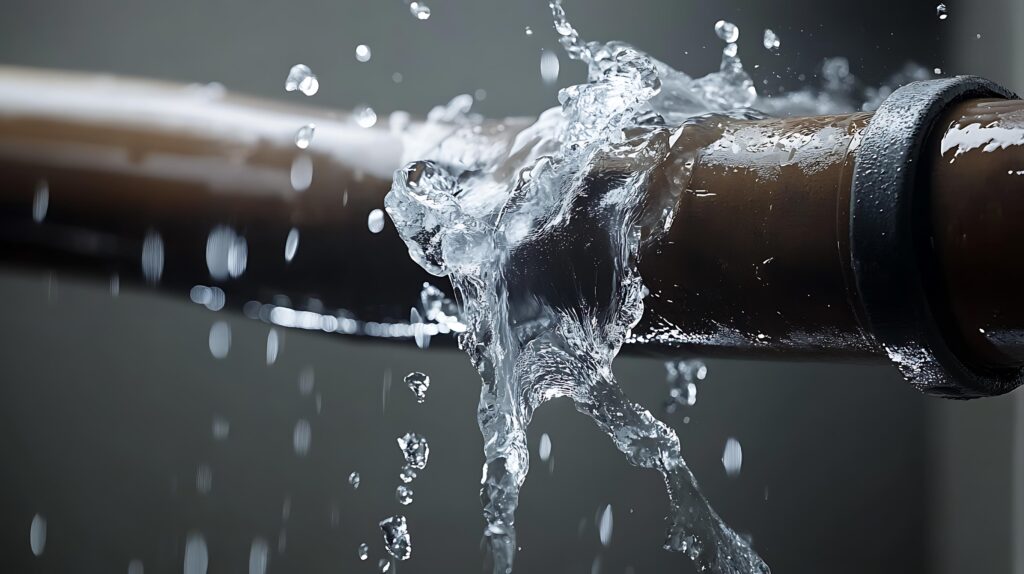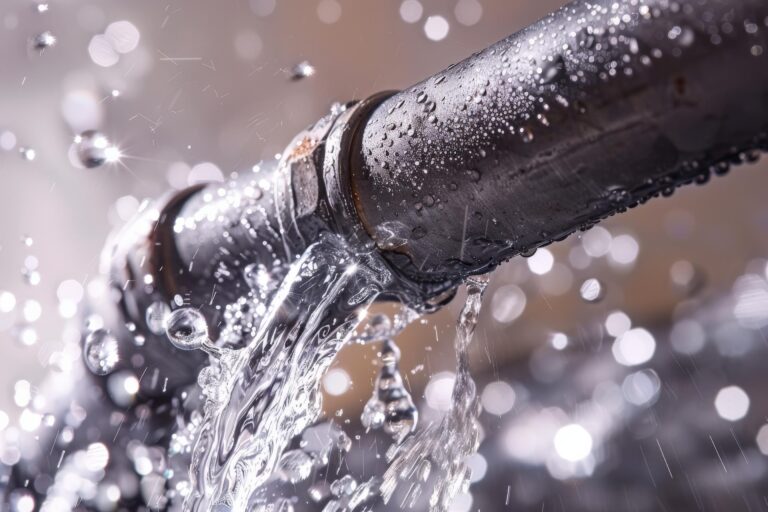
Top Tips for Water Damage Restoration SEO
Have you ever wondered why some water damage restoration SEO services consistently rank higher in local searches? To effectively enhance your online presence, you’ll need to adopt a strategic approach that focuses on localized SEO and quality content. By understanding your target audience and optimizing your website accordingly, you can greatly improve visibility. What specific tactics will set you apart from the competition? Let’s explore the top tips that can elevate your SEO game.
Key Takeaways
- Optimize your website with localized keywords relevant to water damage restoration services to enhance local search visibility.
- Create high-quality, informative content addressing common water damage concerns and solutions to engage potential customers effectively.
- Build quality backlinks through guest blogging and partnerships with local businesses to improve website authority and search rankings.
- Regularly monitor SEO performance metrics like organic traffic and conversion rates to refine strategies for better results.
- Keep content fresh and relevant by updating it regularly, ensuring it meets the current needs and interests of your target audience.
Understand Your Target Audience
To effectively reach potential customers, you must first understand your target audience and their specific needs. Analyzing customer demographics is essential; it allows you to identify age, gender, income level, and geographic location. This data informs your marketing strategy, helping you craft messages that resonate with your audience.
Next, explore the target behavior. Examine how potential customers search for water damage restoration services, including the keywords they use and the platforms they frequent. Understanding these patterns helps you tailor your content and optimize your outreach efforts effectively.
Optimize Your Website for Local SEO
Understanding your target audience sets the foundation for effective marketing strategies, but it’s equally important to optimize your website for local SEO to attract those potential customers.
By focusing on local visibility, you can considerably enhance your reach and engagement. Here are three key strategies to implement:
- Local Directory Listings: Confirm your business is listed in relevant local directories like Google My Business, Yelp, and Angie’s List. Accurate listings boost your credibility and search rankings.
- Geographic Targeting: Use localized keywords throughout your website content. Phrases like “water damage restoration in [Your City]” will help you rank higher in local searches.
- Customer Reviews: Encourage satisfied customers to leave reviews on your local listings. Positive feedback enhances your reputation and influences local search rankings.
Create High-Quality, Informative Content
While many businesses focus solely on the technical aspects of water damage restoration, creating high-quality, informative content is crucial for engaging potential customers and establishing authority in your field.
By leveraging content marketing strategies, you can craft informative articles that address common concerns, tips for prevention, and detailed restoration processes. This educates your audience and builds trust and credibility.
Consider writing case studies that showcase successful projects or guides that outline essential steps for homeowners facing water damage. Use clear language and actionable insights to keep readers engaged.
Remember, your content should answer questions and provide solutions, positioning you as a go-to resource in the industry.
Regularly updating your blog with fresh, relevant content will improve your search engine rankings and drive organic traffic.
Ultimately, high-quality, informative articles can greatly enhance your online presence and convert visitors into loyal customers.
Utilize Keywords Effectively
To improve your SEO for water damage restoration, you need to identify relevant keywords that your target audience is searching for.
Once you’ve pinpointed these terms, optimize your on-page elements like titles, headers, and meta descriptions to enhance visibility.
Additionally, incorporating long-tail phrases can help attract more specific queries, ultimately driving targeted traffic to your site.
Identify Relevant Keywords
Identifying relevant keywords is essential for enhancing your water damage restoration website’s visibility. By focusing on effective keyword research, you can align your content with user search intent, ensuring you attract the right audience.
Here are three strategies to help you find the best keywords:
- Analyze Competitors: Look at the keywords your competitors rank for and identify gaps you can fill.
- Use Keyword Tools: Leverage tools like Google Keyword Planner or SEMrush to discover high-volume, low-competition keywords.
- Consider Local SEO: Incorporate location-based keywords to target customers in your service area effectively.
Optimize On-Page Elements
Optimizing on-page elements is essential for ensuring that your water damage restoration website ranks well in search engines and reaches your target audience effectively.
Start with on-page optimization by incorporating relevant keywords naturally into your content. This includes headings, body text, and image alt tags.
Next, pay attention to your meta tags. Your title tag should be concise and include primary keywords, while the meta description should summarize your page’s content, enticing users to click through. Ascertain that both are within character limits to avoid truncation in search results.
Additionally, use schema markup to enhance visibility in rich snippets. By strategically managing these elements, you’ll improve your site’s SEO performance and drive more targeted traffic.
Use Long-Tail Phrases
While many website owners focus on generic keywords, incorporating long-tail phrases can greatly enhance your water damage restoration site’s visibility.
Long-tail keywords are essential for capturing specific search intent, allowing you to target users looking for precise solutions. Here are three strategic advantages of using long-tail phrases:
- Higher Conversion Rates: Users searching with long-tail keywords are often further along in the buying process, increasing the chances of conversion.
- Less Competition: These phrases typically have lower competition, making it easier for your site to rank higher in search results.
- Improved Relevance: Long-tail keywords allow you to tailor your content to meet specific customer needs, enhancing user experience and engagement.
Leverage Google My Business
To effectively attract local customers, leveraging Google My Business (GMB) is essential for your water damage restoration services. Start by creating a thorough business listing that includes your services, operating hours, contact information, and location. This information helps potential clients find you quickly.
Encouraging satisfied customers to leave Google Reviews boosts your credibility and improves your visibility in search results. Positive reviews enhance your reputation and influence potential clients’ decisions. Responding to reviews—both positive and negative—demonstrates your commitment to customer service and can differentiate you from competitors.
Additionally, use GMB features like posts to share updates, promotions, or seasonal tips related to water damage restoration. This keeps your audience engaged and informed.
Regularly updating your business listing and maintaining accurate information ensures you stay relevant in local searches, ultimately driving more traffic to your services.
Build Quality Backlinks
Building quality backlinks is a powerful strategy for enhancing your water damage restoration website’s authority and search engine ranking.
To effectively engage in backlink building, consider these outreach strategies:
- Guest Blogging: Contribute informative articles to relevant industry blogs, including a link back to your site. This boosts your credibility and drives targeted traffic.
- Local Partnerships: Collaborate with local businesses, such as contractors or real estate agents, to exchange links. These relationships can strengthen your local SEO and build community trust.
- Resource Pages: Identify industry-specific resource pages and pitch your services as a valuable addition. This approach can lead to high-quality backlinks from reputable sites.
Monitor and Analyze Your SEO Performance
To effectively boost your SEO performance, you need to track key metrics that reflect your website’s health.
Utilizing analytics tools can provide valuable insights, allowing you to see what’s working and what isn’t.
Regularly adjusting your strategies based on this data ensures you stay ahead in the competitive water damage restoration market.
Track Key Metrics
While many may overlook the importance of tracking key metrics, doing so is essential for understanding your SEO performance.
To effectively track progress and measure effectiveness, focus on these three critical metrics:
- Organic Traffic: Monitor the number of visitors coming from search engines. This indicates how well your SEO strategies are attracting users.
- Conversion Rate: Analyze the percentage of visitors who take a desired action, such as filling out a contact form. A high conversion rate indicates effective engagement.
- Bounce Rate: Keep an eye on the percentage of visitors who leave your site without interacting. A high bounce rate may signal content issues or poor user experience.
Use Analytics Tools
Tracking key metrics provides a strong foundation, but leveraging analytics tools takes your SEO performance to the next level. By utilizing advanced analytics tools, you can uncover critical insights into user behavior and traffic sources.
Regularly monitor analytics trends to identify which strategies yield the best results. Conduct tool comparisons to select the most effective platforms for your needs, ensuring you’re utilizing features that drive actionable data.
Focus on metrics like bounce rates, session duration, and conversion rates to gauge your site’s effectiveness. These insights allow you to refine your approach, target your audience more accurately, and enhance your overall SEO strategy.
With the right tools, you’ll be better equipped to adapt to ever-changing digital landscapes.
Adjust Strategies Regularly
As you navigate the complexities of SEO, regularly adjusting your strategies becomes essential for maintaining and improving your site’s performance.
You need to monitor your analytics to refine your approach. Here are three key actions to take:
- Adjust Timing: Regularly reassess when your audience is most active to optimize your content publication schedule.
- Evaluate Results: Analyze your traffic and engagement metrics to identify which strategies yield the best results and which need tweaking.
- Stay Updated: Keep an eye on industry trends and algorithm changes to ensure your tactics remain relevant.
Final Thoughts
By implementing these top tips for water damage restoration SEO, you’re not just patching up leaks; you’re building a sturdy foundation for your business in the digital landscape. Picture your website rising above the competition, attracting local clients like a lighthouse guiding ships safely to shore. With a strategic approach to content, keywords, and local listings, you’ll create a robust online presence that withstands the storm and also thrives in it. Stay vigilant and adapt, and success will follow.


